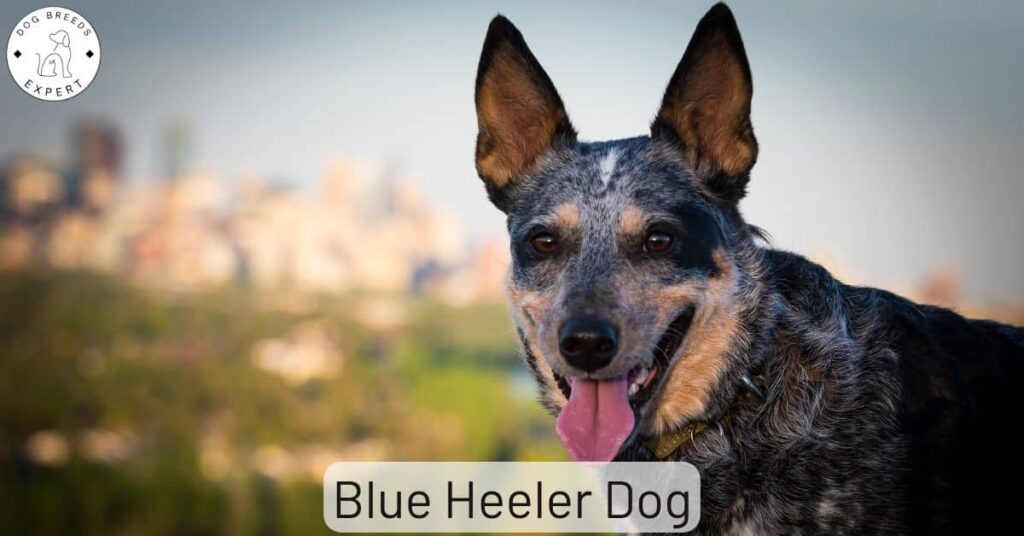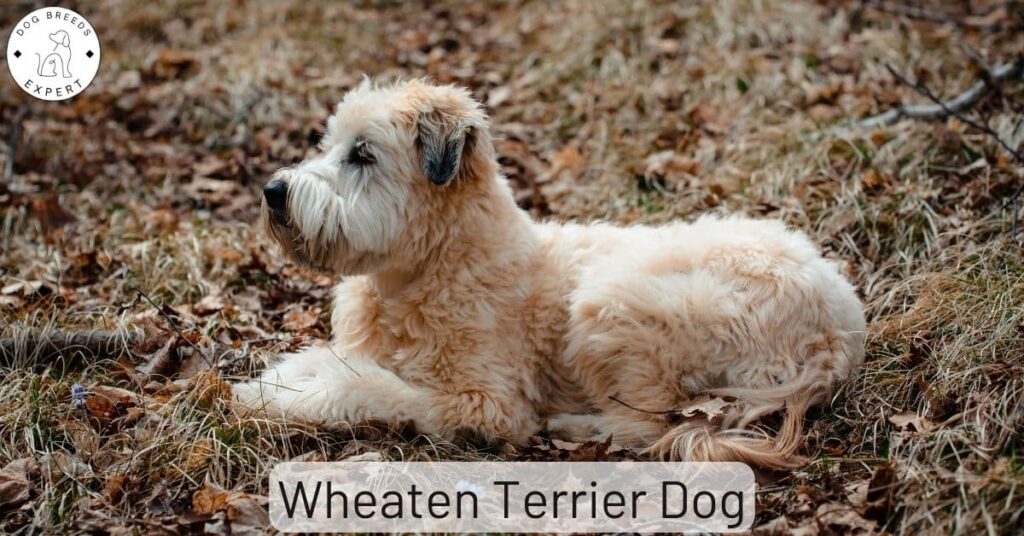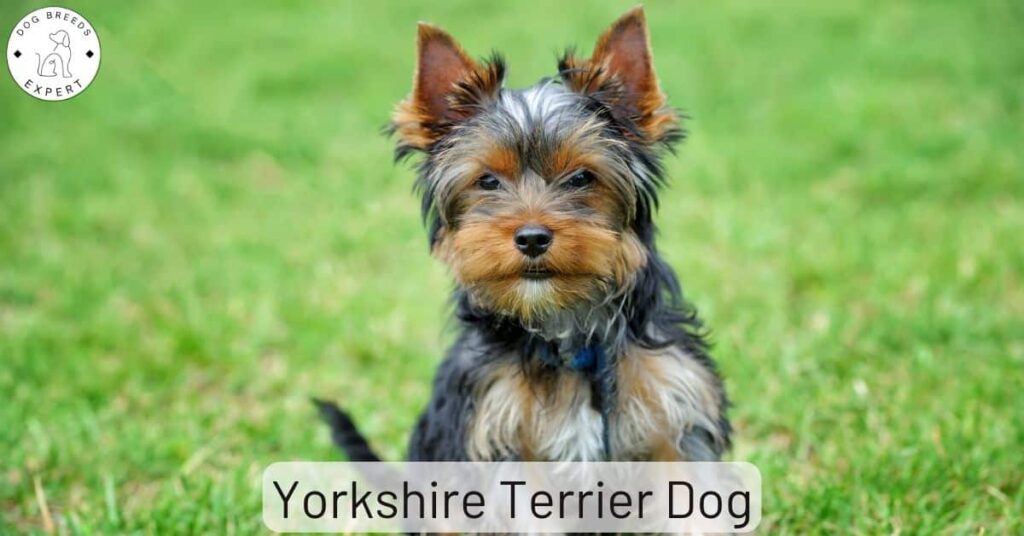The Australian Blue Heeler Dog is a tough herding dog from Australia, also called the Australian Cattle Dog.
The Australian Blue Heeler dog breed is also known as the Queensland Heeler or the Australian Cattle Dog. The breed was created in the second half of the 19th century by Australian cattle breeders who wanted a tough dog to help them herd cattle over the vast ranches and spaces. They used Dingos tamed by Aboriginals and crossed them with imported European sheepdogs.
They get their name from their herding method, which involves nipping at the heels of the cattle, to keep them together. This in-born trait will sometimes cause these dogs to nip at the heels of running children.
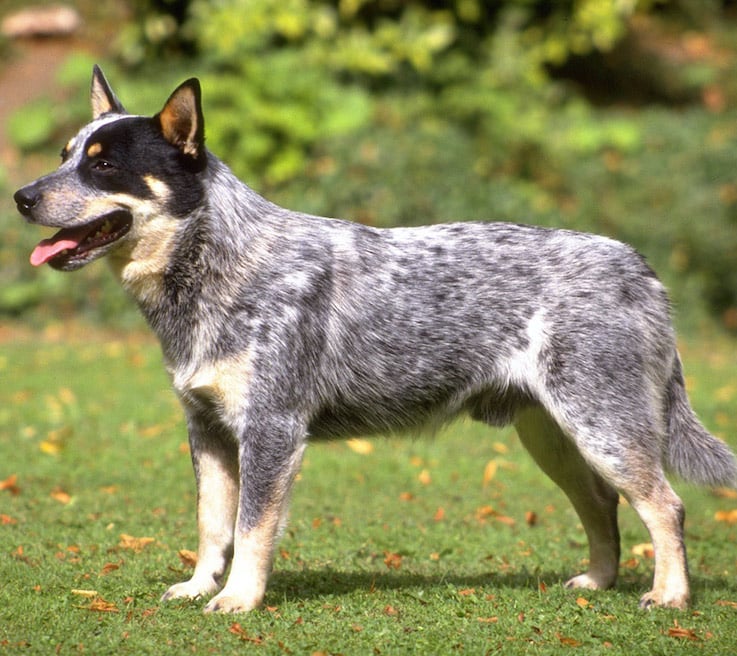
Australian Blue Heeler Dog Australian Cattle Dog – Temperament
There is no difference in temperament between the 2 main colors of this breed – red and blue. They have the same temperament, just different colors of coat. These dogs are very alert, very curious and extremely smart. This intelligence stems from their ancestry, mostly the Scottish Highland Collie and the Dingo, both famed for their intellect.
Like the Dingo and the Collie, the Blue Heeler dog has a tremendous work ethic, and seemingly endless energy. They can withstand extremes of temperature, and are like hard, tough balls of muscle. They need room to move, and a lot of exercise to stop them becoming bored and troublesome.
They need to be taken out for a good run every day, for at least an hour, as well as room in a big back yard to play around in. This means that they are not suitable for apartment living, nor an urban or city environment, unless they can get enough exercise. The Heeler will generally be happier in a rural setting, especially on a farm with a job to do.
At home, the Australian Cattle Dog is loyal, affectionate and playful. But true to it’s ancestors, it is suspicious of strangers and very cautious in new situations. This distrust of unfamiliar people and things makes it a good watchdog and guard dog.
In a family situation, the Blue Heeler dog breed will try to nip the heels of young children running around; this means they are better suited to a household with older children or just adults. It’s possible to train them out of this behavior if tackled early as a puppy, but the innate drive to nip is deeply embedded.
The Blue Heeler will form a very strong bond with its owner, and will tend to stay quite close, but without being clingy. They are bred to work at some distance from their master, but within line of sight, after all. However they can be very protective, and need to be socialized extensively as puppies, to teach them that strangers are not all bad!
As hunting at a distance, out of sight from their owner was never part of the breed development, Australian Cattle Dogs do not tend to venture far from their master. They will always know where he or she is, by line of sight. They are very unlikely to disappear off following a scent, for example.
Finally, this is not a breed that gets on well with other dogs. It will tolerate a few other familiar dogs, but may be aggressive towards strange dogs until a pecking order is established.
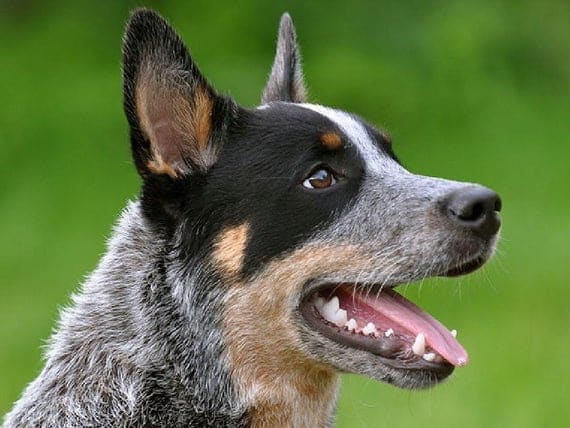
Australian Blue Heeler Dog – Breed History
The earliest record of a ‘Heeler’ breed is that of Hall’s Heeler. Thomas Hall and his family controlled over one million acres of livestock grazing land from New South Wales into Queensland. He set about breeding cattle to occupy these vast estates, but ran into problems trying to get the resulting herds to markets in Sydney.
The task involved moving thousands of cattle along unfenced stock routes for thousands of kilometers. He desperately needing a breed of dog to control and contain the cattle herd during droving. There was no breed at the time that was capable of enduring the heat, the rough terrain and the distances involved.
So Thomas Hall imported drover’s dogs from Northumberland in the North of England, thought to be the Northumberland Blue Merle Drover’s Dog, and he crossed them with Australian Dingos. Some authorities state that Hall had tamed the Dingos himself, while others report that local Aboriginal people had tamed some Dingos.
At any rate, the cross breeding resulted in a tough, muscular herding dog with endurance and intelligence. This breed became known as the “Hall’s Heeler”.
Around the same time, George Elliot of Queensland had been breeding cattle dogs by crossing the Dingo with the Scottish Highland Collie and the Border Collie. He obtained almost the same result as Hall, but of course Elliot’s dogs were called Queensland Heelers.
Over time, the Hall’s Heeler and the Queensland Heeler became the Australian Cattle dog, still also referred to as a Queensland Heeler or more commonly as a Blue Heeler, because of the blue/grey color of the breed. Confusingly, some Australian Cattle dogs are not blue but red – but still referred to as Blue Heelers. The blue sheen comes from the original Northumberland Blue Merle Drover’s dogs, and the red version has the genes for the red coat from the Dingo.
The Blue Heeler dog was recognized as the Australian Cattle Dog by the American Kennel Club in 1980.
Vital Statistics;
Height;
18 to 20 inches (male),
7 to 19 inches (female).
Weight; 35lbs to 50lbs
Life Span; 12 to 16 years
Color; Red or Blue. Both are speckled with a brown or black mask. Puppies are born white, and develop their color after about 4 weeks.
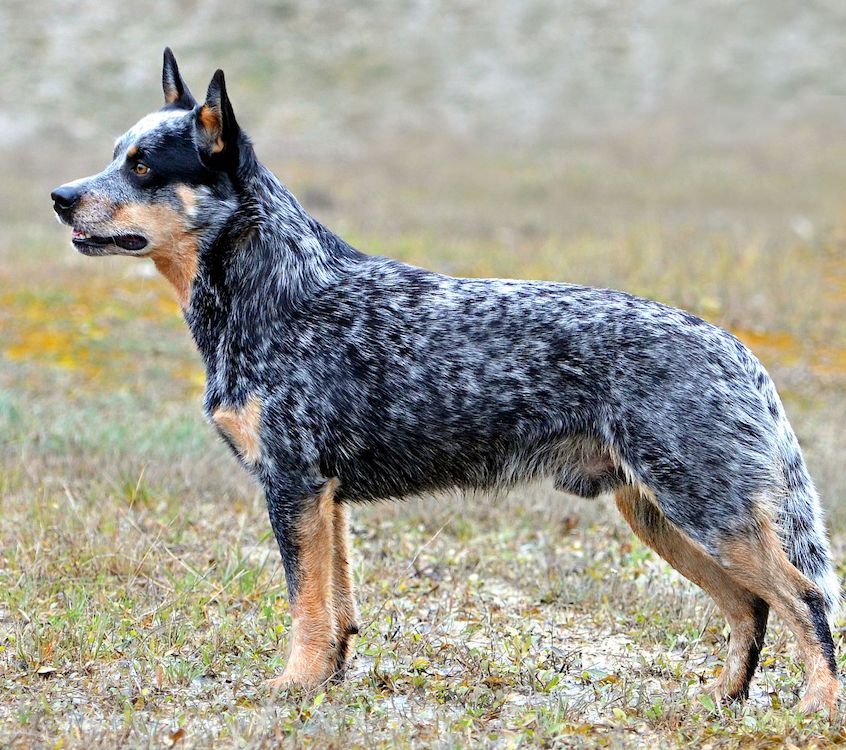
Australian Blue Heeler or Australian Cattle Dog- Ease of Training
Early and extensive socialization is especially important for the Blue Heeler dog if it is to be a family dog as opposed to a pure working farm dog. They need to learn to accept strangers and unusual situations as being non-threatening, and they need to be disciplined out of nipping.
After social training (which is an ongoing task) comes obedience training. As an intelligent and smart breed without an independent nature, the Heeler learns quickly and wants to please. They enjoy a task and having a job to do, and love being engaged.
They do well in obedience, herding and agility tests and competitions. They like the challenge of the tests, although the training for this may take up a significant amount of the owner’s time. These intelligent dogs may also work out their own way to solve a problem, which may not be what the judges require!
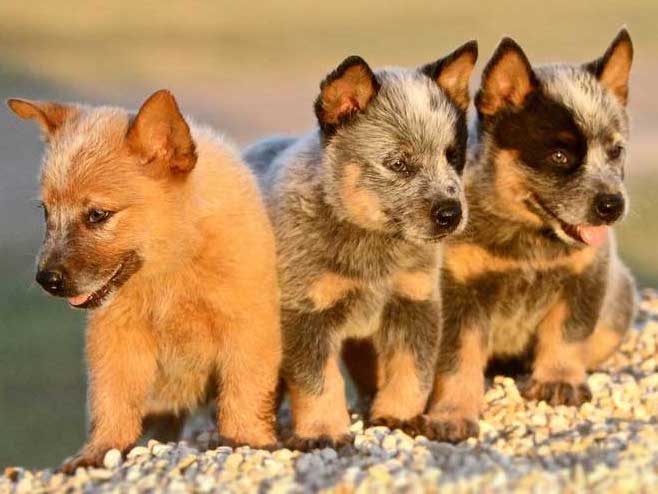
Australian Blue Heeler Protection
The Blue Heeler dog (or Queensland Heeler) makes for a very good watch dog. They are alert and vigilant, as a result of looking after herds of cattle. This breed normally works silently, but they will bark to bring their owner’s attention to something. They are naturally distrustful of strangers and unfamiliar situations, and will raise the alarm if they don’t like something.
If an unwanted intruder tries to gain access, he is very likely to be bitten. The Heeler was bred to control cattle by nipping or biting their heels, and biting is one thing this breed does very well. It will see the intruder as an unwanted presence, and resort to its breeding and bite the stranger.
And the dog will not be beaten off easily. They can weigh up to 50lbs, and with Dingo heritage they are brave and tenacious. A Blue Heeler dog will usually see off any intruder that is not welcome, unless he has a gun.
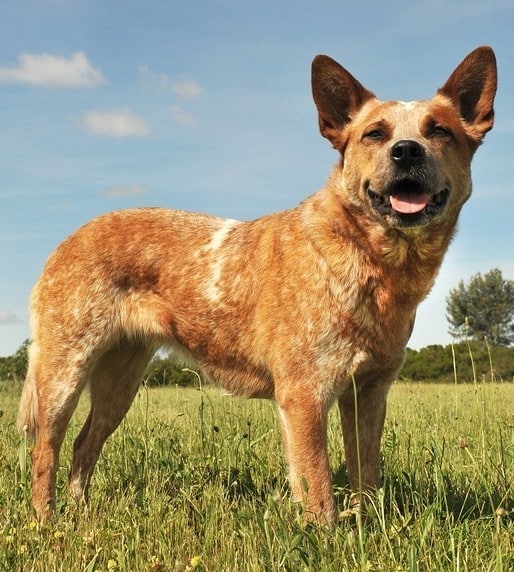
Grooming
This is a breed that was developed to work outdoors, and has a smooth, dense double-layered coat. The Coat does not develop much odor, nor does it have an oily layer, as the breed is not a water dog.
A weekly brushing and an occasional bath is all that is required to keep your Heeler in good shape. However, the undercoat is shed twice a year. During the shedding time, and stiff brush or comb every 2 or 3 days will keep stray hairs to a minimum.
Health Considerations
The Blue Heeler dog breed is generally healthy, with few issues. However, there are certain tests recommended by the National Breed Association. These include;
- Hip evaluation
- Elbow evaluation
- Eye exam
- BAER testing
- PRA optigen DNA test
- PLL DNA test
Famous Blue Heeler Dogs
In Texas, a very talented dog (believed to be part Australian Cattle Dog) called Skidboot won $25,000 in a TV talent show, and subsequently appeared on the Oprah Winfrey Show, Animal Planet, The Tonight Show with Jay Leno, The Late Show with David Letterman, and many others.
In the film “Mad Max 2”, Max befriends an Australian Cattle Dog, and calls him “Dog”.
Please let me know if you are aware of any more, via the Contact Me link. Thank you.

